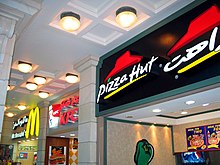Last Updated on March 25, 2025 by Bertrand Clarke
The cost of living crisis in America is deepening, with millions of households struggling to afford basic necessities like food and rent. While wages have remained relatively stagnant, inflation has caused food prices to surge, leaving many families in a financial bind. To cope, more Americans are turning to credit and alternative payment options just to keep food on the table.
A concerning development in this trend is the rise of “Buy Now, Pay Later” (BNPL) options being introduced by major retailers and delivery services. Once reserved for big-ticket items like electronics or furniture, these installment plans are now being applied to groceries and fast food, raising questions about the long-term financial health of consumers.
The Emergence of Buy Now, Pay Later for Food
Recently, DoorDash announced that it will allow customers to order fast food using BNPL services, enabling them to receive their meals immediately while deferring payment. This means that a $40 meal today might not be paid off until weeks later, potentially with added fees. While some see this as a convenient solution for those in financial distress, others warn it could lead to a dangerous cycle of debt.
Similarly, financial services company Affirm has partnered with JPMorgan Chase to expand BNPL options across various retailers, including grocery stores. This means that people may soon be using installment plans not just for occasional takeout but for everyday essentials like bread, milk, and vegetables.
According to a report by the Consumer Financial Protection Bureau (CFPB), BNPL loans can lead to financial instability, especially for individuals already struggling with debt. Unlike traditional credit cards, BNPL services often lack strong consumer protections, making it easier for borrowers to overextend themselves.
Food Prices and Inflation Continue to Strain Budgets
Rising food costs are at the heart of this issue. Economic experts have warned that global supply chain disruptions, climate change, and potential tariffs could drive grocery prices even higher in the coming months. Many local farmers have already been struggling due to unpredictable weather patterns, reducing domestic food supply and increasing reliance on imports, which often come at a higher cost.
With grocery bills climbing, households that were already living paycheck to paycheck are being forced to make difficult choices. Some are cutting back on meals, turning to food banks, or leaning heavily on credit cards. The introduction of BNPL for food may seem like a lifeline, but financial analysts caution that it could lead to deeper financial hardship in the long run.
A Growing Debt Crisis
The use of credit to cover essential purchases is not a new phenomenon. Data from the Federal Reserve indicates that consumer credit card debt has reached record levels, with delinquencies also rising. More people are missing payments, accruing late fees, and falling into financial distress.
Adding BNPL services into the mix could exacerbate this issue. Unlike credit cards, which typically require monthly minimum payments, BNPL loans often break payments into smaller, more frequent installments. If a person has multiple BNPL loans across different retailers, they may struggle to keep track of due dates, leading to missed payments and additional fees.
Chuck Bell, a program director at Consumer Reports, warns that while BNPL can be a useful tool when managed responsibly, it should not be used for everyday essentials like food. “These services should be used selectively, with a clear plan to pay them off. Otherwise, people may find themselves drowning in payments without realizing it,” Bell explained.
The Psychological Impact of Deferred Payments
One reason BNPL services have gained popularity is the way they make purchases feel more affordable. Breaking a $100 grocery bill into four $25 payments may seem manageable, but when combined with other installment plans for rent, utilities, and other expenses, the debt can quickly pile up.
Psychologists suggest that BNPL services can encourage impulsive spending because they separate the act of purchasing from the pain of paying. This effect is particularly concerning when it comes to food, an essential but recurring expense. Unlike a one-time purchase of a smartphone or television, food expenses never go away—meaning people could be caught in a cycle of borrowing just to eat.
What’s Next?
As BNPL services continue to expand into essential spending categories, financial experts are urging consumers to approach these options with caution. While they may provide temporary relief, they are not a sustainable solution to financial hardship.
The real issue lies in the broader economic landscape—wages need to keep up with inflation, and food prices must stabilize to ensure affordability. In the meantime, consumers are encouraged to budget carefully, explore local food assistance programs if needed, and avoid relying on short-term borrowing for necessities.
If the trend of borrowing for groceries continues, the U.S. could see an even deeper debt crisis unfold, affecting millions of families for years to come.












